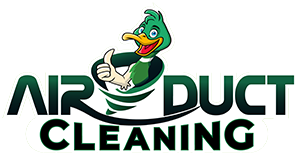Allergens in your home can be a significant cause of discomfort, leading to a variety of health issues such as allergies, asthma, and other respiratory conditions. Reducing these allergens is crucial for maintaining a healthy living environment, and one effective way to achieve this is through professional air duct cleaning. As the top-rated air duct cleaning service provider, we understand the importance of clean air in your home and the role your air duct system plays in this. Our expert team uses advanced techniques and the best products to ensure your ducts are thoroughly cleaned and disinfected, significantly reducing the presence of allergens. Regular air duct cleaning not only helps in reducing allergens but also prevents mold growth, improves air circulation, and enhances the overall air quality in your home. So, if you’re looking to create a healthier living space, air duct cleaning is a necessity you shouldn’t overlook.
“Five Essential Steps to Minimize Allergens in Your Living Space”
Allergens in your home can cause a variety of health issues, including allergic reactions, asthma attacks, and other respiratory conditions. These allergens can come from many sources, such as dust mites, pet dander, mold spores, and pollen. By taking a few essential steps, you can significantly reduce the allergens in your living space and improve your indoor air quality.
- Regular Cleaning
Regular cleaning is the first and most crucial step in minimizing allergens in your home. Dust and vacuum at least once a week to remove allergens from surfaces and prevent them from becoming airborne. Use a vacuum cleaner with a HEPA filter, which can trap small particles that other vacuum cleaners may recirculate into the air.
- Control Humidity
High humidity can promote the growth of mold and dust mites. The Environmental Protection Agency (EPA) recommends keeping indoor humidity between 30% and 50%. You can control humidity levels with a dehumidifier or an air conditioner. Also, ensure that your home is well-ventilated, especially in high-moisture areas like the kitchen and bathroom.
- Use Air Purifiers
Air purifiers can help reduce airborne allergens. They work by drawing in air, filtering out particles like dust, pollen, and pet dander, and then releasing clean air back into the room. Consider using an air purifier in rooms where you spend most of your time, such as the bedroom or living room.
- Regularly Clean or Replace HVAC Filters
Your heating, ventilation, and air conditioning (HVAC) system can be a significant source of allergens if not properly maintained. Regularly cleaning or replacing the filters can help reduce the amount of dust and other allergens that circulate through your home. According to the American Lung Association, you should check your filters every month and replace them at least every three months.
- Professional Air Duct Cleaning
Over time, allergens can accumulate in your air ducts and be distributed throughout your home when you use your HVAC system. Professional air duct cleaning can remove these allergens and improve your indoor air quality. According to the National Air Duct Cleaners Association (NADCA), you should have your air ducts cleaned every three to five years.
For more information on air duct cleaning, visit About Us and How Air Duct Cleaning Works pages. To understand the importance of air duct cleaning, you can refer to How Important is Air Duct Cleaning.
By following these five essential steps, you can significantly reduce allergens in your living space, improve your indoor air quality, and create a healthier environment for you and your family. Remember, a clean home is a healthy home.
“Top Strategies for Allergen Reduction in Your Home”
Allergens in your home can cause a variety of health issues, including allergic reactions, asthma attacks, and other respiratory problems. Therefore, it’s crucial to reduce the presence of allergens in your home to maintain a healthy living environment. Here are some top strategies to help you achieve this.
Firstly, regular cleaning is essential. Dust mites, one of the most common indoor allergens, thrive in dust. Regularly dusting and vacuuming your home can significantly reduce their presence. However, it’s important to use a vacuum cleaner with a HEPA filter, as these are designed to trap small particles like dust mites. Regularly washing bedding and soft furnishings can also help, as these are common places for dust mites to live.
Secondly, controlling humidity can help reduce allergens. Many allergens, including dust mites and mold, thrive in humid conditions. Therefore, keeping your home’s humidity levels below 50% can help to control these allergens. This can be achieved through the use of dehumidifiers, air conditioners, and by ensuring good ventilation.
Another effective strategy is to limit the number of allergens that enter your home. This can be achieved by keeping windows and doors closed during high pollen times, asking guests to remove shoes before entering your home, and regularly bathing pets to remove dander.
However, one of the most effective ways to reduce allergens in your home is through professional air duct cleaning. Over time, allergens such as dust mites, pet dander, and mold can accumulate in your home’s air ducts. When your heating or cooling system is in use, these allergens can be circulated throughout your home, causing health issues.
Professional air duct cleaning can remove these allergens from your system, improving the quality of your indoor air. To understand more about this process, you can visit how air duct cleaning works.
It’s important to note that not all air ducts need to be cleaned, and the frequency of cleaning can depend on various factors such as the presence of pets, smokers, or people with allergies or asthma in your home. To determine if your air ducts need cleaning, you can check out do my air ducts need cleaning.
While some people may worry that air duct cleaning could make a mess in their home, professional air duct cleaning companies use specialized tools and techniques to ensure this doesn’t happen. You can learn more about this at does air duct cleaning make a mess.
In conclusion, reducing allergens in your home involves a combination of regular cleaning, humidity control, limiting the introduction of new allergens, and professional air duct cleaning. By implementing these strategies, you can create a healthier living environment for you and your family.
In conclusion, reducing allergens in your home is not only beneficial for those with allergies but also contributes to the overall health and well-being of all occupants. By following the practical steps outlined in this blog, such as regular cleaning, using allergen-proof bed covers, maintaining a pet-free zone, and investing in air purifiers, you can significantly minimize the presence of allergens. Remember, a cleaner home is a healthier home. It’s worth the effort to create a living space that promotes wellness and reduces the risk of allergic reactions.





